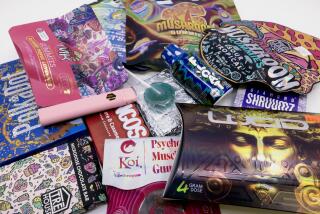10 natural ingredients you have no idea you’re eating: Fish bladders, bug secretions and more
It’s hard to find a packaged food at the grocery store that doesn’t have a million ingredients in it. And most of them seem to be unpronounceable. But what about the ingredients we do recognize on labels? The ones we think we know just because we see them every time we pick up our favorite package of bread or pudding.
It’s common knowledge that rennet is used to make cheese. Gelatin is a main component in Jell-O, and something called shellac gives a lollipop its sheen. All of these are considered “natural ingredients,” and they are. But do we really know where these ingredients come from? Here’s a list of 10 common ingredients, and exactly what they’re made of.
1. Gelatin: Boiled cow or pig skin, ligaments, tendons and bones -- Gelatin, such as for jiggly, Cosby-promoted Jell-O, is a protein made with the skin, ligaments, tendons and bones of cows or pigs. It’s used in certain ice creams, marshmallows, puddings and Jell-O as a thickening agent. If you’re looking to not eat pig tendons in your pudding, try to find products that include agar agar instead; it’s vegan and made from seaweed.
2. Isinglass: Dried fish bladders -- A pint of beer may be the best way to wash down a basket of fish and chips for a lot of reasons. But this probably isn’t one of them. Isinglass is a type of gelatin made from the air bladders of fish, mostly sturgeons. It’s used as a clarifying agent for beer and wine. Most of the bladders used during production are cleared from the beer before it’s ready to be consumed, but remnants may make their way into the finished product. For this reason, some beers are not considered vegetarian products.
3. Rennet: Enzyme from cow stomach lining -- Rennet is an animal enzyme made from the stomach lining membrane of an unweaned cow. It’s used to curdle milk, which makes cheese. There is also vegetable rennet used to make vegetarian-friendly cheeses.
4. Shellac: Insect secretions -- Shellac is made of a secretion by a female lac bug, commonly found in India and Southeast Asia. The substance is washed, heated, then flaked. The hard flakes are mixed with ethyl alcohol, liquefied and used to paint a sheen on lollipops and other hard candies. Nothing like a little bug secretion to get your sweet tooth going.
5. Goat colostrum: Pre-milk of pregnant goats -- Colostrum is a thick, yellow fluid mammals produce before producing mother’s milk. Nothing described as a thick, yellow fluid has ever been appetizing, unless we’re talking about a runny egg yolk. Goat colostrum is known for its especially strong system immune-boosting properties and is sometimes added to smoothies.
6. Stearic acid: Fat from pigs, cows, sheep, dogs and even cats -- Stearic acid is a fatty acid sometimes extracted from the fat of pigs, cows, sheep, dogs and cats. Chew on that bit of information a second. No really, chew on it. Stearic acid is a common softening agent in chewing gum.
7. Carmine: Crushed insects -- Red dye is used in everything from baked goods to drinks, and if it’s the Carmine variety -- also called cochineal -- it’s made of bugs. This type of dye is made from crushed cochineal beetles. Starbucks used the red dye in some of its drinks, but declared early last year that it would no longer use it.
8. L-cysteine: Amino acid from hair -- L-cysteine is an amino acid derived from human hair, duck feathers or hog hair. It’s used as a dough conditioner to soften bread. If the thought of a piece of human or animal hair in your sandwich isn’t making you hungry right now, you’re not alone.
9. Argan oil: Oil from nuts that may have passed through the digestive tracts of goats -- This oil is made from nuts found on argan trees in Morrocco. But the nuts are notoriously hard to crack. However, something about going through a goat’s digestive tract (you can guess what that means) makes the nut easier to crack. Nut pickers consider these particular argan nuts prized finds. Argan oil is a popular cosmetic ingredient, but it’s also used as an oil for dipping and often on couscous or vegetables and salads.
10. Castoreum: Beaver anal glands -- Castoreum, or castor, is made from crushed beaver anal glands. The ingredient is used in ice cream. How someone figured out they should put beaver butt in ice cream is something worth pondering. You may not even know you’re eating it. Since beaver butt is technically natural, it can be listed as a “natural ingredient” without further specification.
ALSO:
Jonathan Gold’s best Italian restaurants
Inside the making of the Sriracha documentary
How many free samples are too many to take? Here are some rules
More to Read
Eat your way across L.A.
Get our weekly Tasting Notes newsletter for reviews, news and more.
You may occasionally receive promotional content from the Los Angeles Times.









